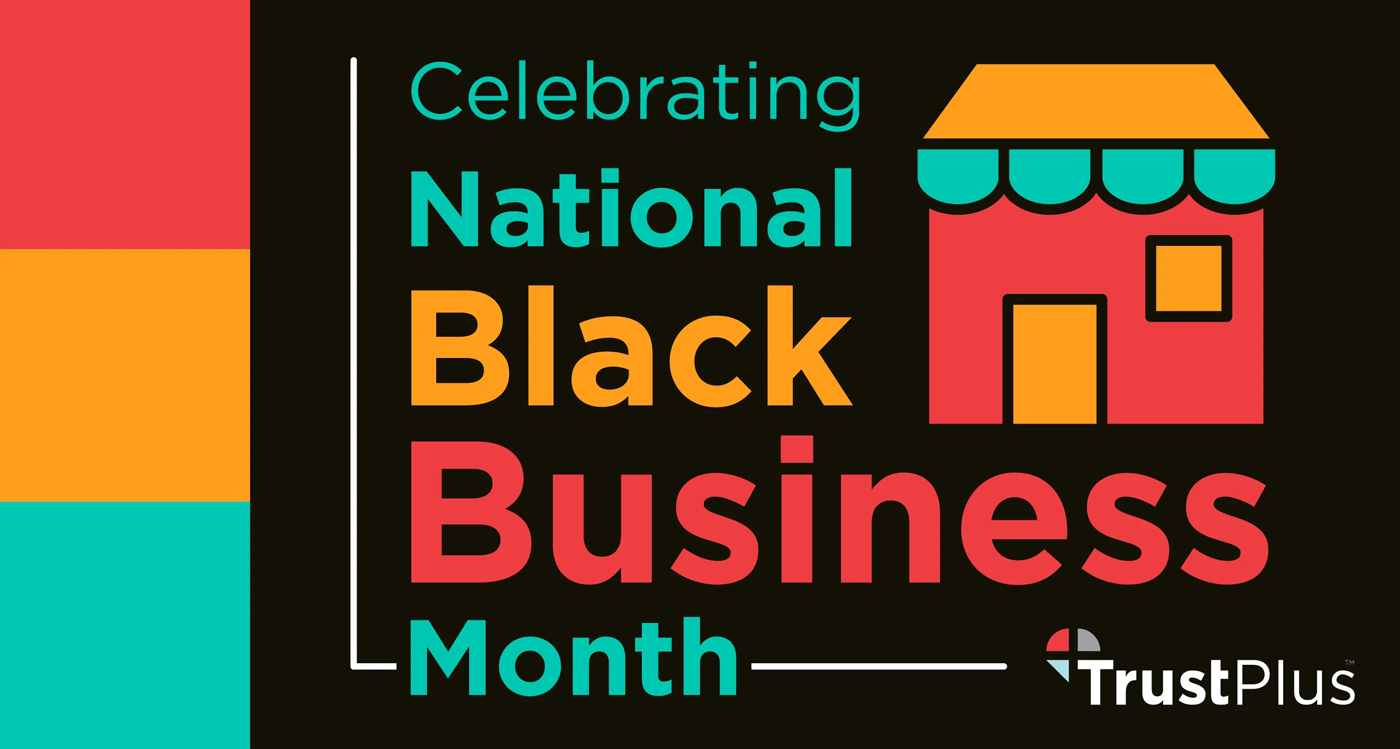Your 401(k) employer match is exacerbating income inequality, suggests research from Vanguard and from economists at MIT, Harvard, Yale, and the Census Bureau. What’s a smart employer committed to profits, impact, and equity to do? Consider auto enrollment at a savings rate that qualifies for the full employer match and/or capping your employer contributions at a set dollar amount.

National Black Business Month is a time of celebration and reflection, as many of our TrustPlus clients are Black business owners, sole proprietorships, primarily.
TrustPlus personal financial coaching supports them with tailored guidance, products, and services in navigating an economic system that yields data like these:
“Black Americans comprise about 14.2% of the U.S. population, yet Black-owned businesses represent…only 2.4% of employer businesses,” according to Brookings’ Manann Donoghoe, Andre M. Perry, and Hannah Stephens.
It’s hard to start a business, harder still to employ others, harder still-er if you’re Black.
These data represent a symptom and a cause of the persistent racial wealth gap nationwide because business ownership is closely linked with income and wealth generation:
“69% of those in the top 1% of the income distribution earn money from pass-through businesses, such as partnerships or S-corporations. Among the wealthiest 1% and top 0.1%, pass-through business assets account for the largest source of asset value. Much of these financial benefits — as well as higher subjective well-being — accrue to owners of businesses that employ others, as opposed to owners of sole proprietorships…”
What do all these data points tell us?
“Efforts to increase the share of Black employers can help narrow racial wealth divides while increasing innovation, income, and opportunities for everyone.”
Black business owners will close the racial wealth gap
Black business owners are on the front lines of closing the racial wealth gap.
If you’re a (Black) business owner then TrustPlus wants to help you capture the benefits of a financially healthy workforce, from profits to productivity, retention to turbocharging your return on your investment in your financial wellness platform. That is, in your people.
And we want to help you and all employers ensure that your financial wellness platform is driving not only profits and impact but equity.
We do not want to be inadvertently benefiting top earners while exacerbating income inequality, right?
Yet, recent research from Vanguard and from economists at MIT, Harvard, Yale, and the Census Bureau suggests the good ole 401(k) employer match, that pillar of financial wellness platforms in recent decades, is doing just that.
401(k) employer matches perpetuate racial income inequality?
Indeed, your 401(k) employer match is probably driving racial wealth and income inequality:
Nearly half of the $200 billion companies contribute to workers’ 401(k)s goes to the top 20% of earners, finds Vanguard’s research. The lowest-earning workers get 6% of the money.
As Anne Tergesen writes in the Wall Street Journal:
“The study looked at the 10 most popular matching formulas and found all but one disproportionately rewarded the top 20% of earners with a higher share of matching dollars than income.”
What’s a smart employer, committed to profits, impact, AND advancing equity, to do?
Consider auto enrollment at a savings rate that qualifies for the full employer match and/or capping your employer contributions at a set dollar amount.
[And, of course, investing in personal financial coaching from TrustPlus. Read here about three financial wellness benefits, unrelated to 401(k) matches, with high potential for meaningful, equitable, impact.]
Equalize your 401(k) employer match
One way smart employers can help lower-paid (disproportionately Black and Latinx) workers get more matching dollars is by automatically enrolling them at a savings rate that captures the full matching contribution.
“The formula that does the best job of more equitably distributing employer contributions caps them at a set dollar amount,” Vanguard’s study finds, per Tergesen.
With dollar caps, the top one-fifth of earners received on average roughly 33% of the matching contributions compared with 35% of the pay.
Fred Thiele, vice president of global benefits and mobility at Microsoft, tells Tergesen they switched their matching formula to a dollar cap in 2016 to entice its lower-paid employees to save more for retirement.
Previously, Microsoft matched half of employees’ contributions up to 6% of pay. “But lower earners disproportionately saved at around 6% of pay,” says Thiele.
Now Microsoft matches 50 cents of every dollar an employee contributes, up to $11,500.
“Lower-paid workers received about three-quarters of the extra dollars Microsoft spent on its matching program when it adopted the new formula,” Thiele adds.
The kicker: It’s not only more equitable, it’s leading to more savings, overall.
More than 60% of employees now save at the $23,000 limit, up from 36% in 2015.
Schedule a time to speak with TrustPlus about strengthening your financial wellness platform.






